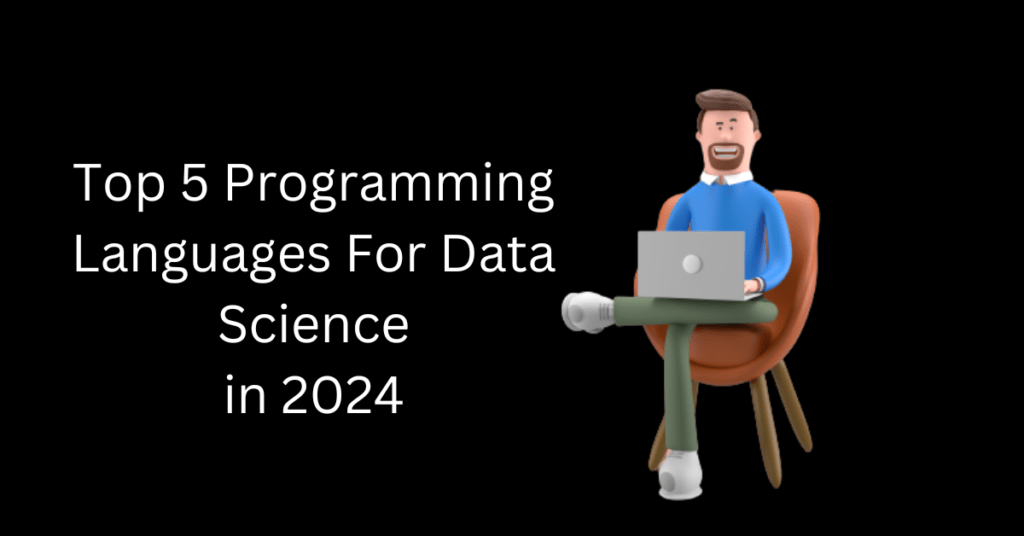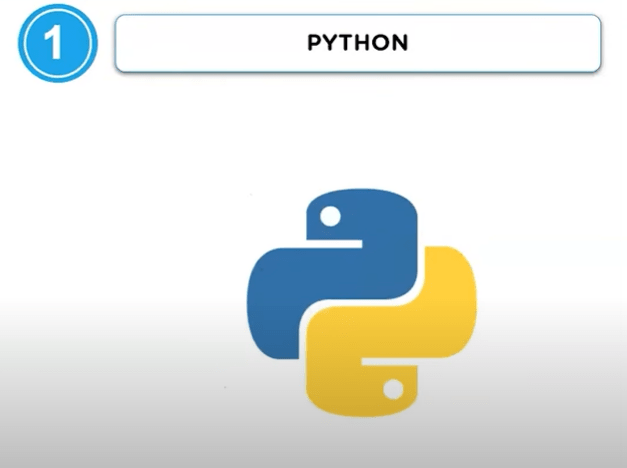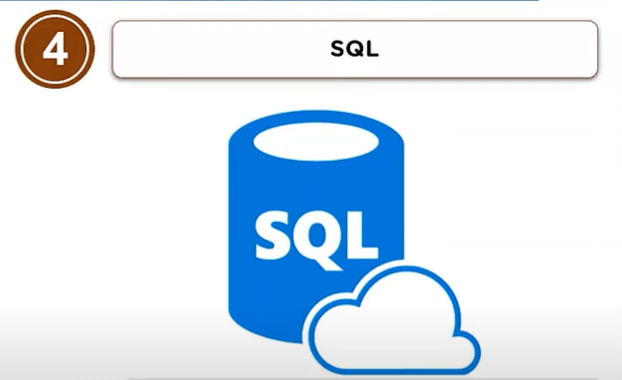Top Programming Languages for Data Science in 2024
 Naveen
Naveen- 0

Data science is the art of discovering patterns and hidden gems within vast data oceans. Think of it as being a detective of the digital age, unraveling mysteries using numbers, algorithms, and technology. Just like a detective needs the right tools, data scientists in 2024 also rely on a toolkit of powerful programming languages to crack the code of data. In this blog post, we will explore the top choices for programming languages in data science, which will help you succeed in this ever-evolving field.
Python: The King of Data Science

Python remains the king of data science. It is easy to learn, versatile, and has a vast ecosystem of libraries like NumPy, Pandas, and Scikit-learn that make data analysis and machine learning a breeze. Python is often considered the best language for data science for a few simple reasons:
- Ease of learning: Python is relatively easy to learn and read, allowing people to quickly grasp the basics of coding and start working on data science projects without getting bogged down by complex syntax.
- Huge toolbox: Python has a massive collection of tools or libraries that make it easy to work with data. These tools help with everything from organizing data, doing calculations, creating visual graphs, to building machine learning models. Python provides everything you need in one language.
- Community support: There is a big community of Python users, including many data scientists. This means that if you have questions or run into problems, you are likely to find help and answers online. Python’s easy learning curve, powerful data handling tools, and helpful community make it the best language for data science. It’s like having a user-friendly all-in-one toolbox for data analysis.
R: The Statistical Analysis Language

Coming in at number two is R programming. R is specifically designed for statistical analysis and data visualization. If you love statistics, this language is your best friend. There are multiple reasons to consider R as your primary tool for data science:
- Statistical focus: R is tailor-made for statistics and data analysis. It provides an extensive range of statistical packages and libraries for data exploration and hypothesis testing.
- Data visualization: R excels in data visualization with packages like ggplot2, making it a great choice for creating high-quality graphs and plots.
- Reproducibility: R’s focus on script-based workflows and strong support for version control can help data scientists maintain data analysis transparency and reproducibility.
In simple terms, R is like a professional toolbox for people who love numbers and want to find hidden stories in data. It’s designed to make data analysis and statistics as smooth as possible.
Julia: The Rising Star

In the third spot, we have Julia. Julia is an emerging language known for its speed and simplicity. It’s gaining popularity for high-performance numerical and scientific computing. Other reasons to make Julia your primary tool include:
- Lightning-fast: Julia is super fast. It can process data and perform complex calculations much quicker than some other languages. This is a big deal when you’re dealing with a lot of data.
- Mathematical power: If you run into math and number crunching, Julia has a lot of mathematical tools that can make your life easier. It’s like having a super smart calculator.
- Growing strong: Julia is a bit like a rising star. More and more people are using it, and its community is growing. This means you can expect more excellent tools and support in the future.
SQL: The Database Language

Moving on to number four, we have SQL. SQL is the language for managing and querying databases. Data scientists must work with databases, and SQL is a must-learn language for data extraction and manipulation. SQL is a good language for data science because it’s like having a powerful organizer and investigator for data. Other reasons to consider SQL for data science include:
- Data detective: SQL helps you ask questions about your data and can quickly find and organize the answers. It’s like having a detective who can search through a huge stock of files and pick out precisely what you need.
- Database friend: Most data in the real world is stored in databases, and SQL is the key to unlocking and managing that data. It’s like having the keys to a treasure chest full of valuable information.
- Data cleaning: Before doing fancy data science stuff, you must often clean and prepare the data. SQL is great for data cleaning, like a handy tool that makes data neat and tidy.
In simple terms, SQL is like a detective, a key, and a cleaning crew all-in-one. It helps you investigate data, open the information treasure chest, and prepare it for your data science adventures.
Scala: The Big Data Language

Finally, at number five, we have Scala. Scala is great for building scalable data applications and working with big data frameworks like Apache Spark. Reasons to include this language in your toolbox are:
- Big data friend: Scala works well with big data tools like Apache Spark. It can handle tons of data and do calculations on a massive scale, like processing a mountain of information all at once.
- Code that grows with you: Scala is great for building large, complex data systems. It’s like building a skyscraper – you can start small and keep adding floors as you need more space, or in this case, code.
- Best of both worlds: Scala combines the power of Java, a proper programming language, with the flexibility of scripting languages, making creating data pipelines and workflows easier.
In simple terms, Scala is like a trusty multi-tool. It can deal with big data, scale up as you need to grow, and give you the best of different coding worlds. Scala is your go-to tool if you’re dealing with a lot of data and want your code to be solid and flexible.
Conclusion
The top programming languages for data science in 2024 offer a balance of simplicity, power, and versatility. Python, R, Julia, SQL, and Scala cover everything from data cleaning to machine learning and big data processing. If you’re interested in learning data science in 2024, consider learning these languages as they will provide you with a solid foundation for your data science journey.
If you have any questions regarding this blog post, feel free to let us know in the comment section below, and our team of experts will definitely answer them for you. Until next time, keep learning and stay tuned to Simply Learn for more amazing updates.
